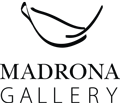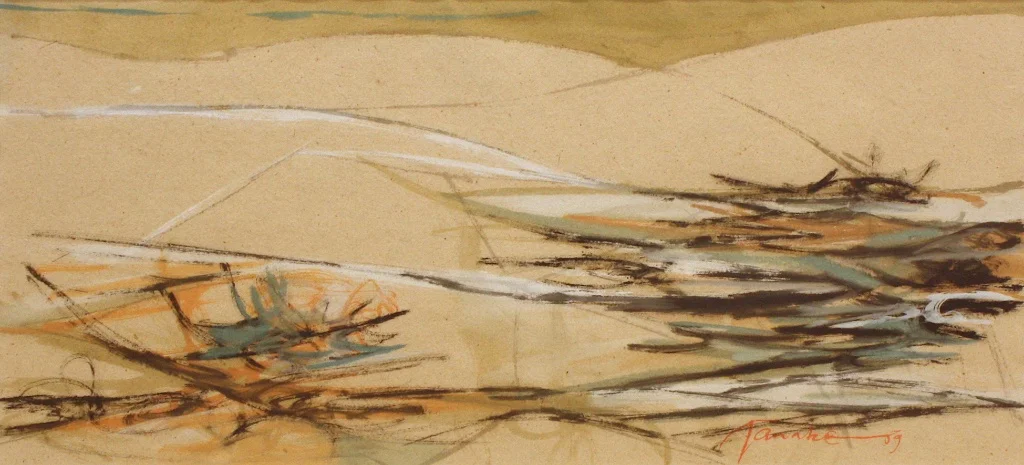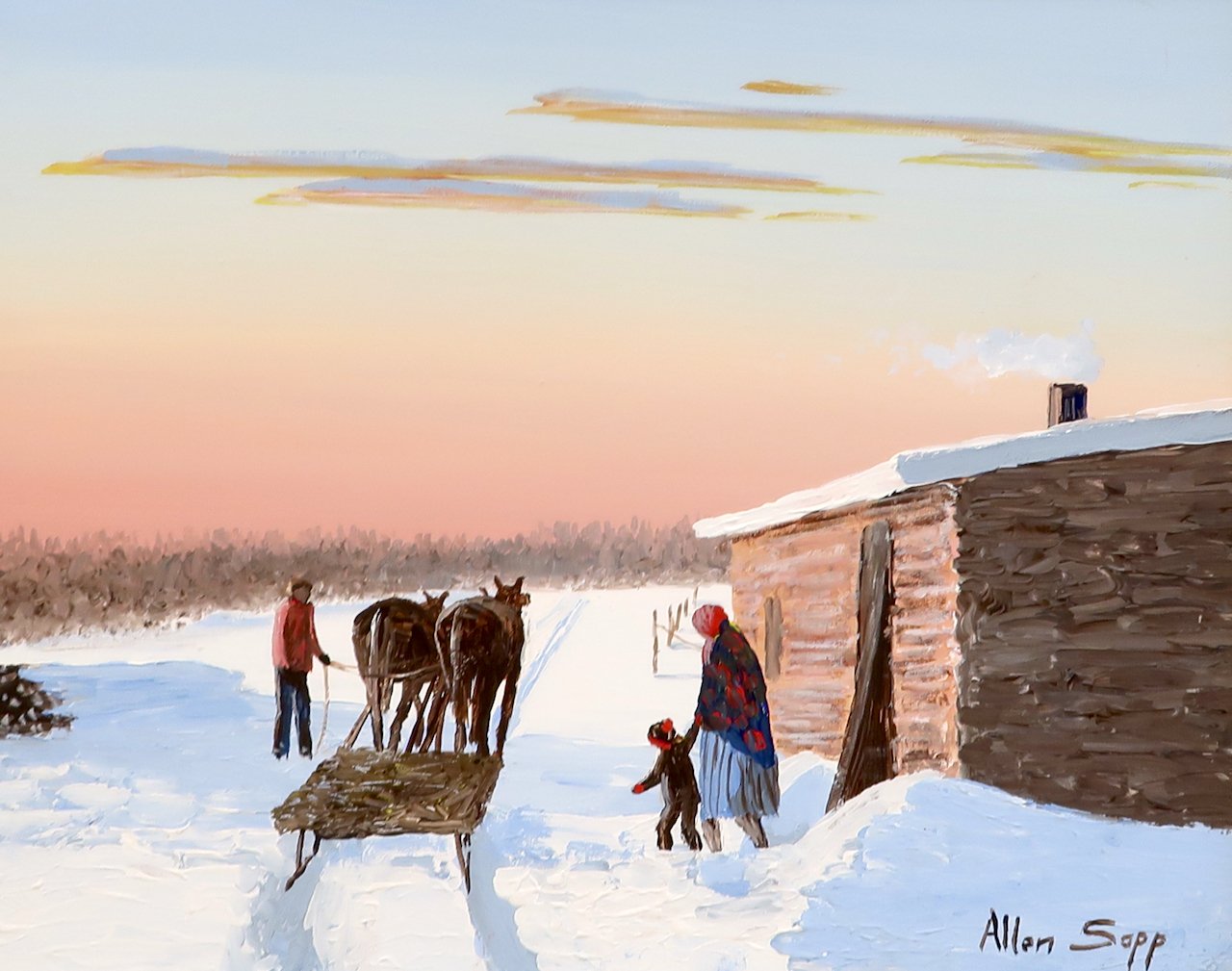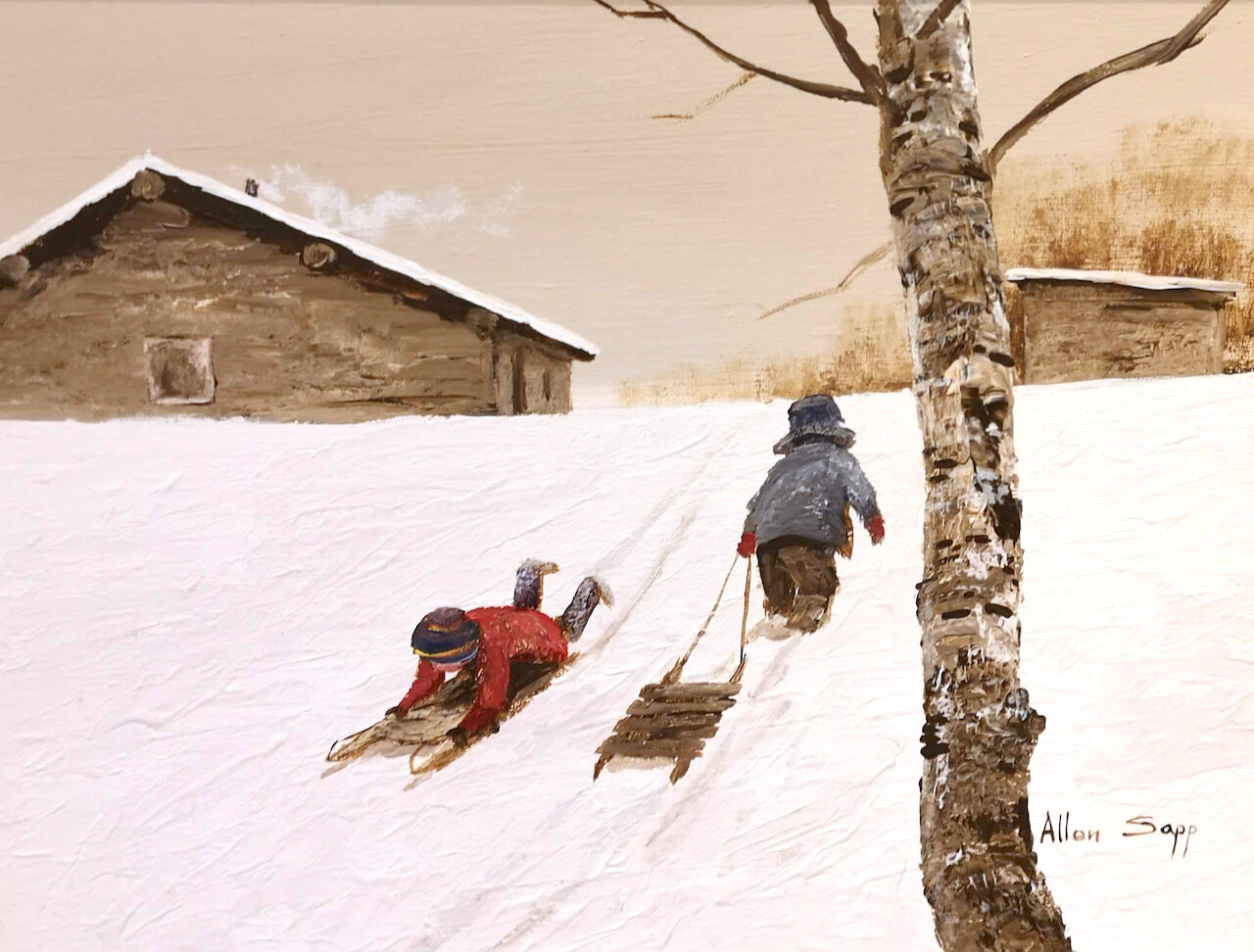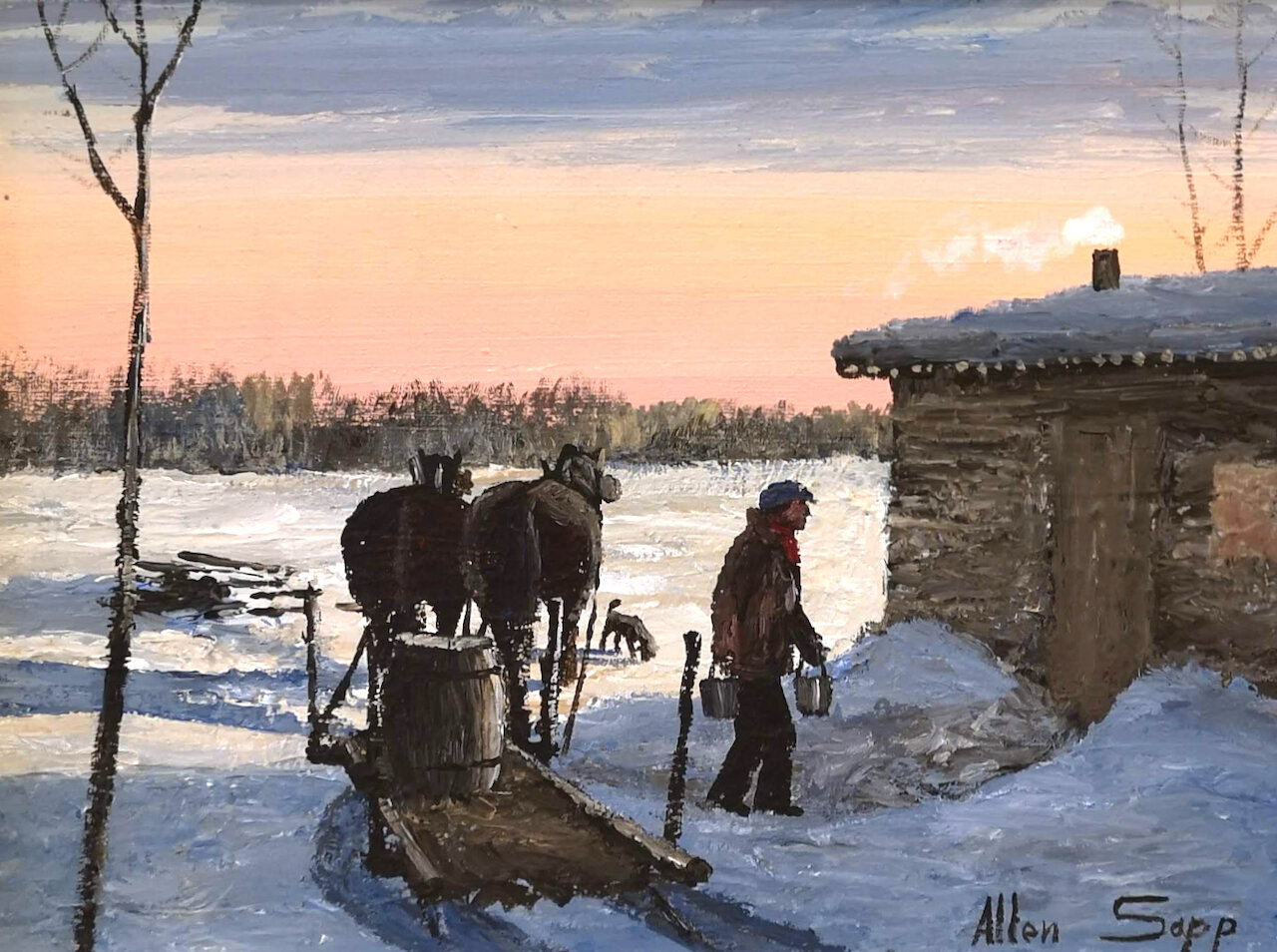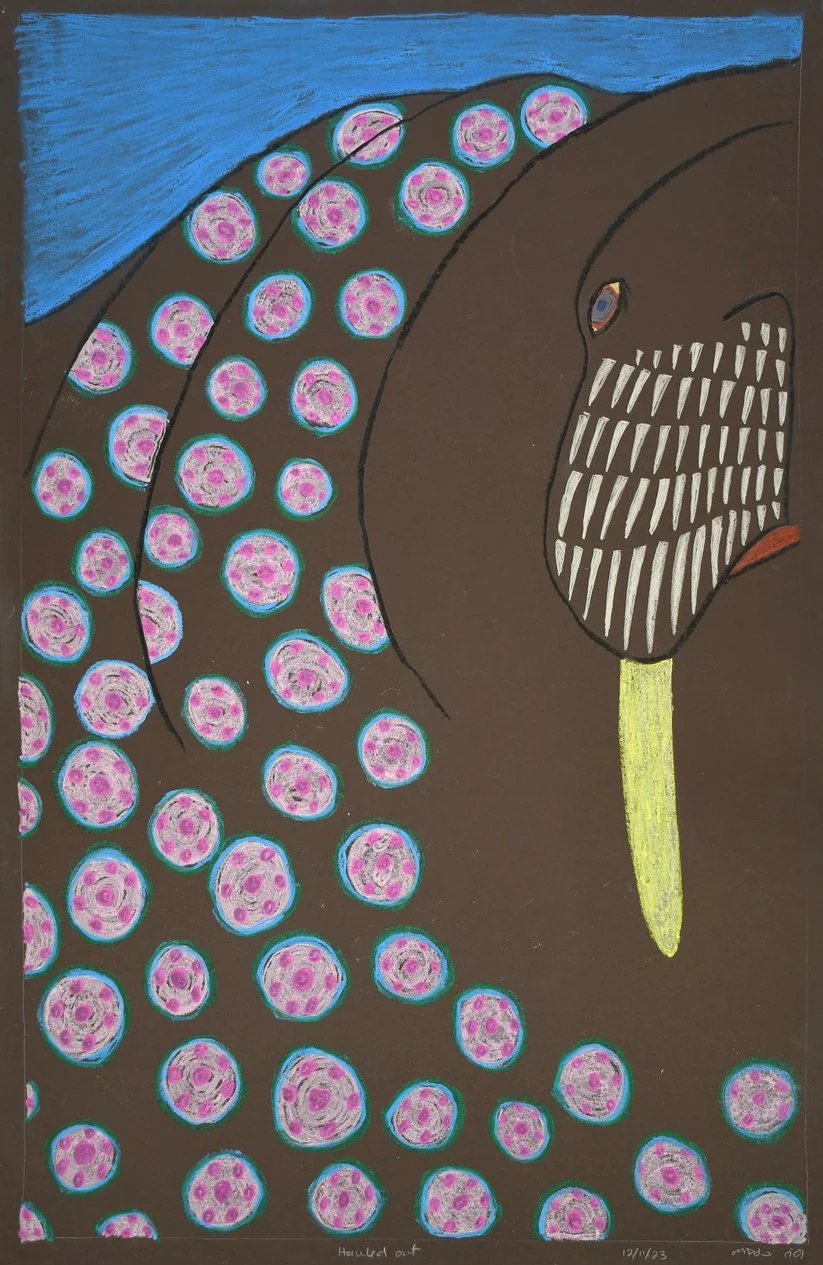Allen Sapp
/b. 1929 - d. 2015
Allen Sapp moved from the Plains Cree reserve to North Battleford, Sask, in 1960 to pursue a career as a professional artist. In 1966, Dr A.B. Gonor arranged for him to be tutored by Wynona Mulcaster of Saskatoon. Gonor continued to work with Sapp, encouraging him to paint the reserve life as he knew it.
Sapp is widely regarded as one of Canada's foremost Aboriginal painters. Sapp's success as a painter in the realist tradition (associated more with European art) made him a pioneer of the new Indigenous arts. His paintings depict the ordinary day to day life he lived with his grandparents on the reserve in the 1930's and 1940's. Although all his images are drawn from his own personal experience, his work has come to be seen as a sensitive portrayal of the life of the Northern Plains Cree in the early part of the 20th century. Sapp continued to paint into his 70s and frequently produced images of contemporary Cree culture, such as colourful powwows alongside dynamic chuckwagon races. (In his later years, Sapp also continued to dance at powwows across North America.)
In 1994, the Mackenzie Gallery in Regina, with the co-operation of the Allen Sapp Gallery, organized a retrospective exhibition titled Kiskayetum, which toured across Canada, including a stop at the Museum of Civilization in Hull, Québec. Sapp was an Officer of the Order of Canada and a member of the Royal Canadian Academy of Arts.
excerpt courtesy of the Canadian Encylopedia
